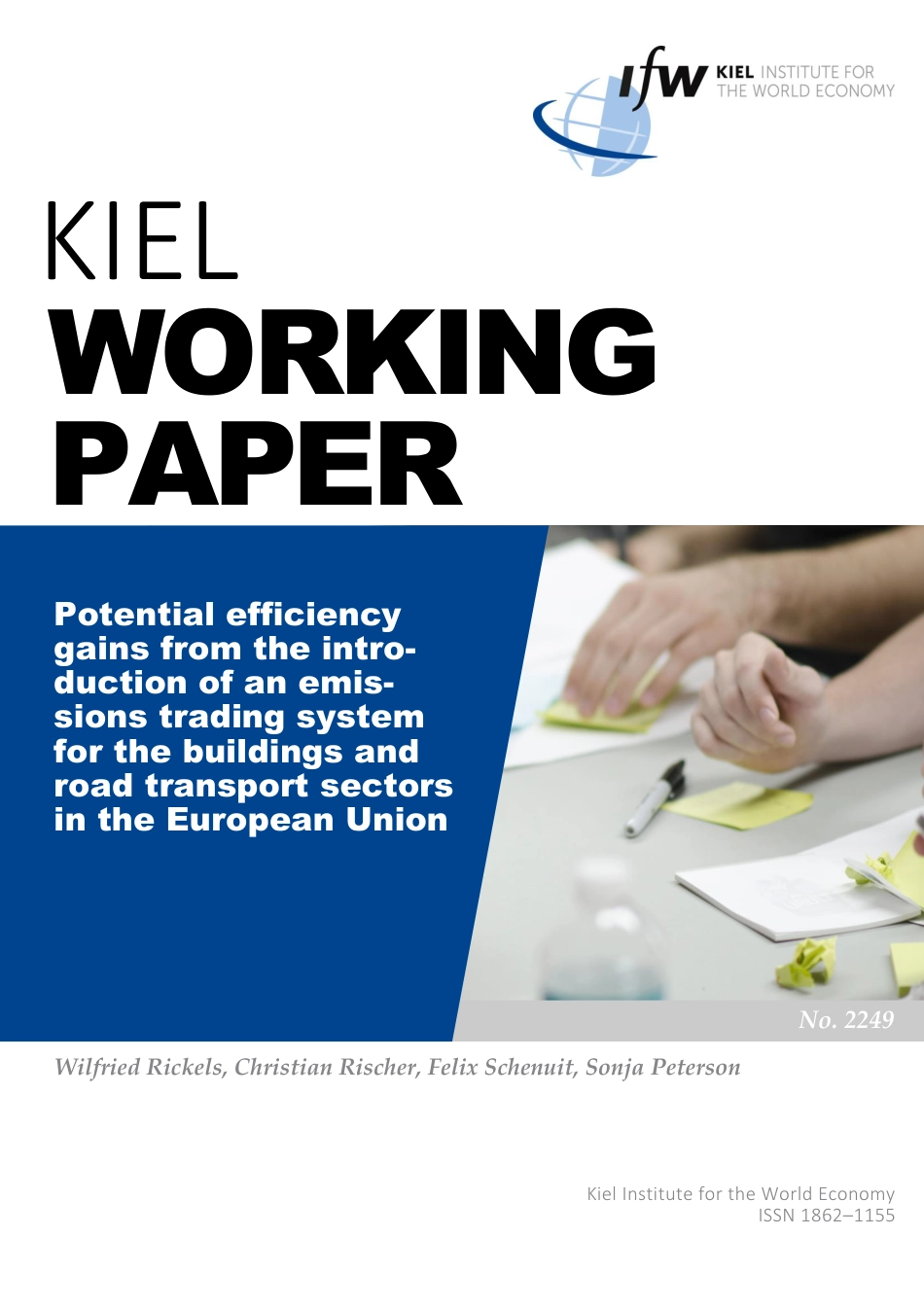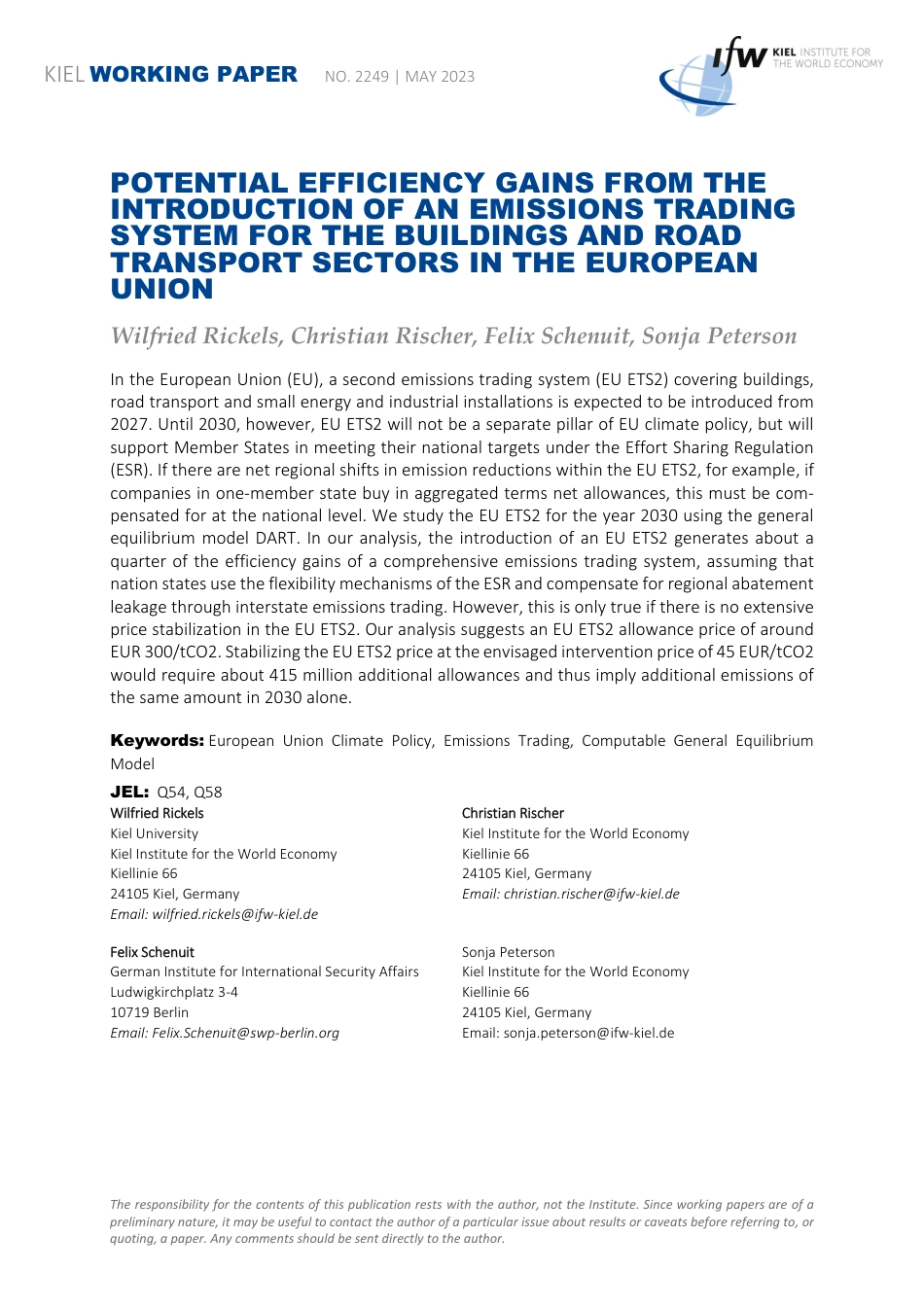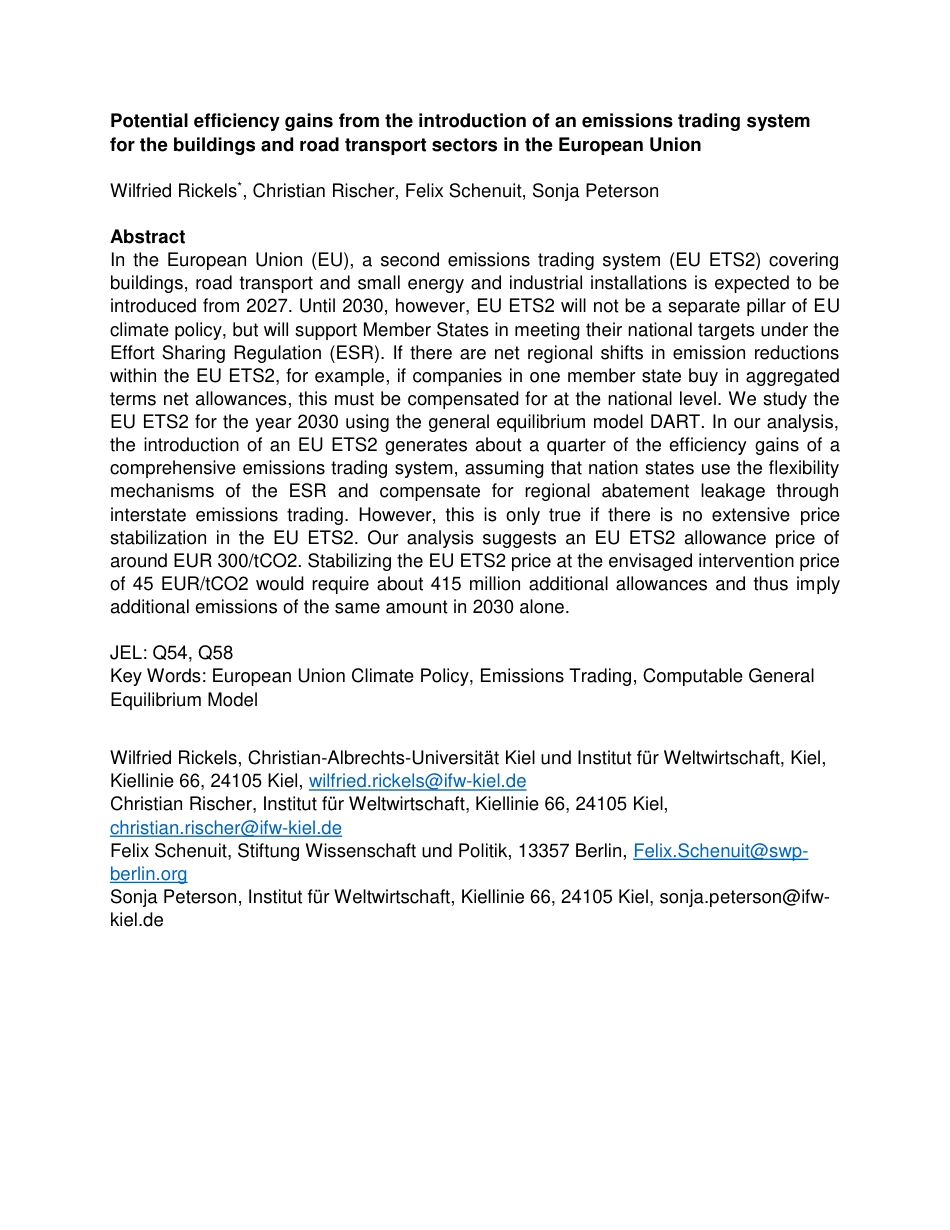KIEL Kiel Institute for the World Economy ISSN 1862–1155 Wilfried Rickels, Christian Rischer, Felix Schenuit, Sonja Peterson Potential efficiency gains from the intro-duction of an emis-sions trading system for the buildings and road transport sectors in the European Union No. 2249 WORKING PAPER KIEL WORKING PAPER NO. 2249 | MAY 2023 POTENTIAL EFFICIENCY GAINS FROM THE INTRODUCTION OF AN EMISSIONS TRADING SYSTEM FOR THE BUILDINGS AND ROAD TRANSPORT SECTORS IN THE EUROPEAN UNION Wilfried Rickels, Christian Rischer, Felix Schenuit, Sonja Peterson In the European Union (EU), a second emissions trading system (EU ETS2) covering buildings, road transport and small energy and industrial installations is expected to be introduced from 2027. Until 2030, however, EU ETS2 will not be a separate pillar of EU climate policy, but will support Member States in meeting their national targets under the Effort Sharing Regulation (ESR). If there are net regional shifts in emission reductions within the EU ETS2, for example, if companies in one-member state buy in aggregated terms net allowances, this must be com-pensated for at the national level. We study the EU ETS2 for the year 2030 using the general equilibrium model DART. In our analysis, the introduction of an EU ETS2 generates about a quarter of the efficiency gains of a comprehensive emissions trading system, assuming that nation states use the flexibility mechanisms of the ESR and compensate for regional abatement leakage through interstate emissions trading. However, this is only true if there is no extensive price stabilization in the EU ETS2. Our analysis suggests an EU ETS2 allowance price of around EUR 300/tCO2. Stabilizing the EU ETS2 price at the en...



